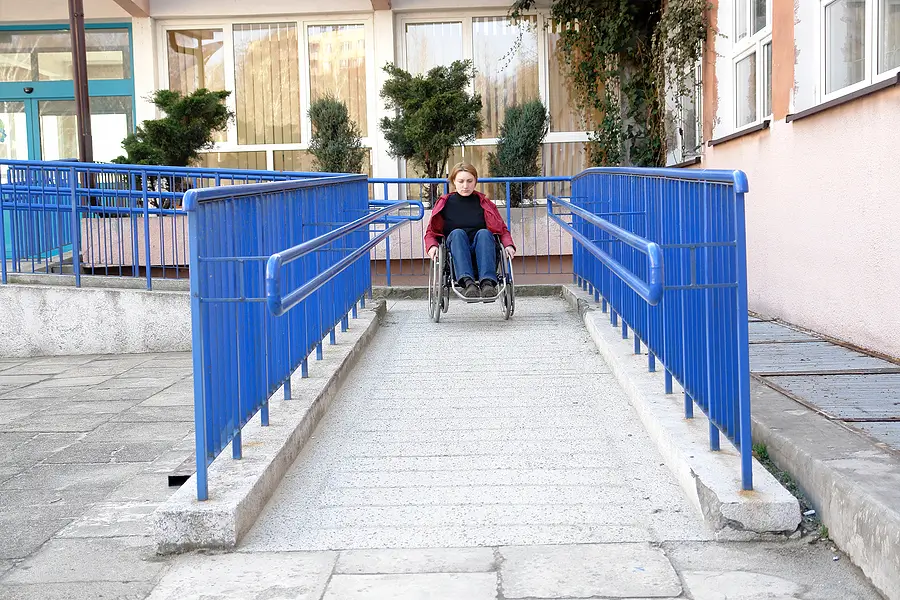Did you know that failing to accommodate disabled tenants could land you in legal trouble? Many landlords think accessibility is optional, but under California law, it’s not.
Landlords who prioritize accessibility don’t just avoid legal trouble. They attract long-term renters, increase property value, and create an inclusive living space for everyone. Plus, providing reasonable accommodations isn’t just the law—it’s the right thing to do.
Making your rental unit more accessible doesn’t have to be difficult or expensive. Simple changes can open your property to more renters while keeping you compliant with federal law.
This guide will teach you everything you need to know about accessibility laws, whether you’re new to them or looking for practical ways to upgrade your rental properties.
Disabled Tenant Rights in California
California has some of the strongest disabled tenant protections in the country. If you own rental properties, you have legal obligations to ensure that people with disabilities have equal opportunity to rent and live in your units comfortably. This is not just about compliance—it’s about creating housing that accommodates physical disabilities, mobility impairments, hearing impairments, and visual impairments so that all tenants can live safely and independently.
Laws Protecting Disabled Tenants
Several federal and state laws ensure individuals with disabilities are not discriminated against when seeking accessible housing:
Fair Housing Act (FHA) – Prohibits landlords from refusing to rent or making reasonable accommodations for tenants with disabilities.
Americans with Disabilities Act (ADA) – Applies to public housing and shared spaces, ensuring accessible living in areas like leasing offices and common areas. It also states that landlords have no right to inquire about the nature of a prospective tenant's disability.
California Fair Employment and Housing Act (FEHA) – Extends protections beyond the FHA, requiring landlords to consider reasonable modifications and reasonable accommodations that help tenants with disabilities.
Reasonable Accommodations vs. Reasonable Modifications
A reasonable accommodation is a change in policies, rules, or services that makes it easier for a disabled person to use and enjoy their rental unit. For instance, adjusting rent payments when disabled tenants receive income assistance. Landlords must grant these requests unless they create an undue burden or fundamentally alter the rental property.
A reasonable modification, however, is a physical change to the property that allows a tenant to live comfortably. The prospective tenant typically pays the cost of these changes, but the landlord must approve the modification as long as it does not cause significant structural changes or financial hardship.
Exceptions: In some cases, the landlord may be responsible for the cost of modifications, such as if the housing is government-subsidized or if the modifications are needed due to the landlord's failure to maintain the property (e.g., accessibility features were required by the building codes but not installed).
How to Make Your Rental Property More Accessible for Disabled Tenants
Making a rental property accessible benefits both disabled tenants and property owners. While some landlords assume accessibility upgrades require major renovations, many small, cost-effective changes can make a big difference. Whether you're renting out a single-family home, a condo, or an apartment building, here are ways to create a more accessible living space that complies with federal law while increasing your property's appeal.
1. Improve Entryways and Outdoor Spaces
The first challenge for many wheelchair users and people with mobility impairments is simply getting inside the home. Uneven pathways, stairs, and narrow entryways can make access difficult, but these solutions can help:
Install a wheelchair ramp: If your unit has stairs leading to the front door, consider adding a wheelchair ramp or a gently sloped walkway.
Ensure a step-free entrance: Some disabled tenants may struggle with even a small step. A simple threshold ramp can help.
Offer accessible parking: If the rental includes a driveway or parking lot, designate a spot near the entrance with enough space for mobility scooters and wheelchair users.
Widen doorways: Many standard interior doors are too narrow for wheelchair users. Expanding them to at least 32 inches can improve accessibility.
Install automatic or lever-style door handles: Round doorknobs can be difficult for those with limited mobility or physical impairments. Lever handles are easier to use.
2. Upgrade Bathrooms for Safety and Comfort
Bathrooms are one of the most important areas to consider when making a more accessible apartment or rental home. Simple upgrades can significantly improve safety and independence for disabled tenants:
Install grab bars: Grab rails beside the toilet, bathtub, and shower provide extra stability.
Offer raised toilets: A raised toilet makes sitting and standing easier for those with mobility impairments.
Provide a roll-in shower: A step-free shower with a wide entrance allows wheelchair users to enter safely.
Add a shower chair or bench: Many disabled tenants benefit from a secure seat in the shower.
Install accessible sinks: Pedestal or wall-mounted sinks allow wheelchair users to roll up closer.
Use anti-slip flooring: Reducing fall risks with textured, non-slip tiles helps tenants live safely.
3. Create an Accessible Kitchen
The kitchen should be designed for ease of use, allowing people with disabilities to prepare food, store items, and clean up independently. Consider these upgrades:
Lower countertops: Standard countertops are often too high for wheelchair users. Lowering a section can make food prep easier.
Install pull-out shelves: Deep cabinets can be hard to reach. Pull-out shelves help tenants access stored items.
Provide easy-to-reach appliances: Wall ovens with side-opening doors and stovetops with front controls are safer for tenants with limited mobility.
Use touch or lever-style faucet handles: These are easier to operate than traditional knobs.
Ensure good lighting: Bright lighting helps tenants with visual impairments navigate the space safely.
4. Improve Flooring and Interior Features
Inside the home, flooring and layout can impact how easily a disabled tenant can move around. Making small changes can improve accessibility:
Replace thick carpets with hardwood or vinyl flooring: Carpets can make it hard for wheelchair users to move. Hard, smooth flooring is easier to navigate.
Secure rugs and mats: If rugs are used, they should be firmly secured to prevent tripping hazards.
Ensure wide hallways: Hallways should be wheelchair accessible and must be at least 36 inches wide to accommodate people with disability.
Lower light switches and raise electrical outlets: Placing switches and outlets at an accessible height makes them easier for people with disabilities to use.
Use voice-activated smart home technology: Features like smart thermostats, lighting, and door locks can improve accessible living for tenants with limited mobility.
5. Improve Accessibility for Tenants with Visual or Hearing Impairments
Accessibility isn’t just about mobility—visual impairments and hearing impairments should also be considered. Here are some modifications that can help:
Install brighter lighting: Well-lit accessible spaces reduce hazards for tenants with low vision.
Use high-contrast colors: Contrasting colors on walls, doors, and furniture make navigating easier for tenants with visual impairments.
Add tactile markers: Raised dots on appliances, elevators, and keypads help tenants with low vision or blindness.
Provide doorbells and fire alarms with flashing lights: These alerts assist tenants with hearing impairments.
Offer smart home assistants: Voice-activated devices can assist tenants with limited mobility or visual impairments.
Handling Reasonable Accommodation Requests
Tenants can submit a reasonable accommodation request in writing, explaining what they need and why. As a housing provider, you must review these requests fairly and work with tenants to find solutions.
Denying a reasonable accommodation request without a valid reason can lead to legal trouble. If the request creates an undue burden, landlords must provide evidence as to why it’s not possible rather than rejecting it outright.
Create an Inclusive Home for Tenants with Disabilities
Making your rental property accessible isn’t just about legal compliance—it’s about ensuring that people with disabilities have a comfortable and safe place to live. Even small adjustments can significantly improve a tenant’s quality of life. Plus, accessibility features can help you attract long-term renters, reduce vacancy rates, and increase your property's value.
At Advantage Property Management Services, our property managers take the stress out of managing accessibility requirements by offering expert guidance and hands-on support. Our services include:
Ensuring Fair Housing Compliance – We help landlords understand and meet the requirements of the Fair Housing Act and Americans with Disabilities Act (ADA).
Coordinating Accessibility Modifications – From reasonable accommodations to full-scale accessibility upgrades, we assist in making your rental more inclusive.
Tenant Communication and Support – We handle reasonable accommodation requests and ensure a smooth process for both landlords and tenants.
Property Maintenance and Safety Checks – Regular inspections ensure your rental units meet safety and accessibility standards.
Contact us today to see how we can help you create a welcoming, accessible, and hassle-free rental experience for all tenants!
Related Articles
Difference Between Service, Emotional Support Animals, and Pets
California's SB 329: Landlords Must Accept Housing Vouchers
CA Fair Housing: Mistakes Pleasanton Landlords Make in Advertising Vacancies






